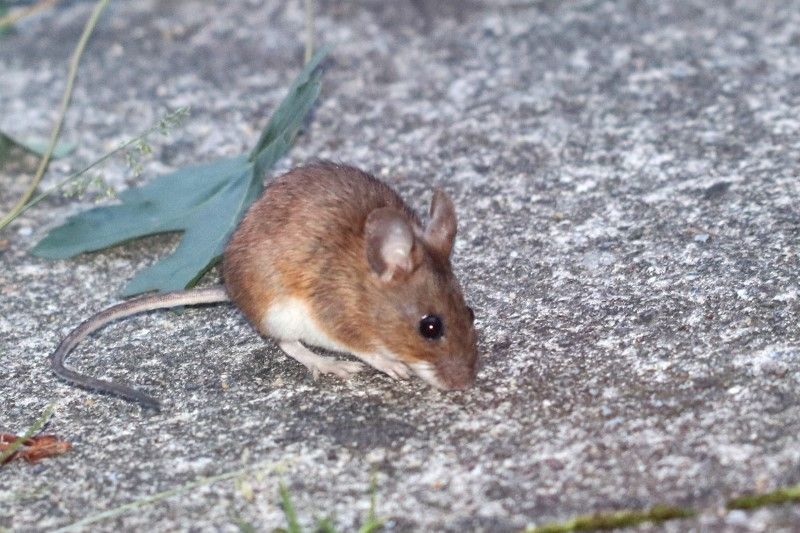Yellow-necked mouse

Status
Native, widespread in much of England and Wales
Population
1,500,000
Scientific name
Apodemus flavicollis
The yellow-necked mouse can be easily confused with the more common wood mouse, and the two were only identified as separate species in 1834. Yellow-necked mice are larger and their fur is more orange in colour than that of wood mice. As their name suggests, they have a yellow band of fur between their front legs that wood mice lack. They are nocturnal and are good climbers, travelling large distances in trees in search of buds, seeds or small insects. They often jump around energetically and are more likely to bite if they are caught. They make use of extensive burrow systems, which are mostly within 50cm of the surface but sometimes as deep as 150cm. Seeds and invertebrate food are often stored in these. Yellow-necked mice are more tolerant of each other than wood mice, and three or four adults may nest together in winter.
Head-body length: 10 – 12cm
Tail length: Longer than body
Weight: 25 – 45g
Lifespan: Few survive longer than 12 months
Reproduction
Up to three litters of 4 – 11 pups are born each year between February and October. The young are weaned by four weeks. Those born in the spring are sexually mature at about 10 weeks and can breed in the same calendar year; autumn-born offspring usually reproduce only in the following spring.
Diet
Insects, seedlings, buds, fruit and insect larvae.
Habitat
Mainly woodlands, but also hedgerows and orchards. They are sometimes found inside buildings, such as food stores and garden sheds, particularly in winter.
Predators
Barn and tawny owls, stoats, weasels, badgers, foxes and cats.
Threats
Loss of ancient woodland habitat.
Conservation status
GB Red List: Least Concern (LC).
Population size and distribution
GB population: 1,500,000. Common in the south and southeast of England, and in central Wales. Records from Neolithic and Roman sites suggest that they were once more widespread than they are now. They are absent from Scotland and Ireland.
Did you know?
Yellow-necked mice sometimes escape predators by jumping almost a metre in height, over eight times their own body length.
